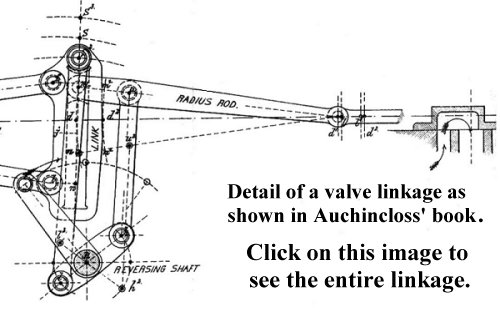Old Linkages
Today, an old book with two messages. The University of Houston's College of Engineering presents this series about the machines that make our civilization run, and the people whose ingenuity created them.
Here's a wreck of an old book -- an 1869, first edition with an unpromising title: The Practical Application of the Slide Valve and Link Motion. The Civil War had just ended and people were back at work on two serious problems: developing more efficient and powerful steam engines, and trying to make paper from something other than cotton rags -- which had been the raw material of most printed books since Gutenberg. This book speaks to both matters.
With drawings, graceful and lucid, it explains valve action on the rapidly evolving steam engine. And, in a very different voice, its brittle paper and dreadful condition speak to the troubles we caused when we first tried to replace cotton rag with wood pulp.
First, steam engines: They admit steam to a cylinder where it can press against a piston; then spent steam has to be let out of the cylinder. That's all well and good; but those pistons move back and forth many times per second. Valves that let steam in and out have to open and close very precisely during tiny portions of the piston stroke.
It took timing in milliseconds, and we had no electronics to do the job. Instead, the huge iron engine drove linkages that operated valves mounted on the cylinders. If you have a taste for such things, you see an iron ballet when you watch them -- a stunning exercise in both mass and delicacy -- a dance that was honed and improved all down through the nineteenth century.
This book was a very important source of information about that dance. For half a century, new editions appeared. Even today, reprints are still published. But this is a first edition and it's printed on an early generation of wood pulp paper.
 Paper makers had been trying to develop wood pulp paper-making for thirty years before our Civil War. Now and then, a newspaper had issued an edition printed on paper made from wood. But those processes were too costly to be competitive. Not 'til the waning days of the Civil War did wood pulp gain commercial traction.
Paper makers had been trying to develop wood pulp paper-making for thirty years before our Civil War. Now and then, a newspaper had issued an edition printed on paper made from wood. But those processes were too costly to be competitive. Not 'til the waning days of the Civil War did wood pulp gain commercial traction.
Wood-based paper was still a primitive technology when it was applied to my book -- now fragile as dust. As I try to read it, it flakes under my fingers. My computer shows fourteen such survivors in libraries, many in open stacks. It shows only two used copies for sale. It's already rarer than Newton's original Principia, although far more were made. We understand the value of the Principia; but who knows how to see importance in machinery that opened up America while most of us were still huddled on the East Coast.
Our world is being formed on today's ephemeral Internet just as it was once formed by cheap books printed on marginal paper. Our problem is now, as it was in 1869, the impossibility of knowing what's important and how to preserve it. That becomes all the more immediate to me as I consider how, when I'm not looking, this crumbling old book will almost surely vanish into someone's trash bin.
I'm John Lienhard, at the University of Houston, where we're interested in the way inventive minds work.
W. S. Auchincloss, The Practical Application of the Slide Valve and Link Motion to Stationary, portable, Locomotive, and Marine Engines. (New York, D. van Nostrand, Publishers, 1869).
L. H. Weeks, A History of Paper-Manufacturing in the United States, 1690-1916. (New York: Burt Franklin, 1916/1969).

A late 19th-century wood-pulp paper mill
